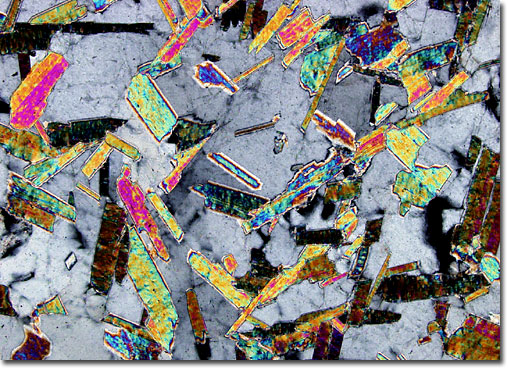|
Muscovite occurs in metamorphic, igneous, and sedimentary rocks in monoclinic crystals that form diamond-shaped or pseudo-hexagonal “books,” a term which derives from their characteristic appearance. Books of muscovite and other micas can vary drastically in size, some reaching as many as 10 feet in diameter. Also, like other micas, muscovite exhibits perfect cleavage, easily separating into thin, flexible laminae. Other minerals that may be found in association with muscovite include feldspar, quartz, beryl, and tourmaline.
|
